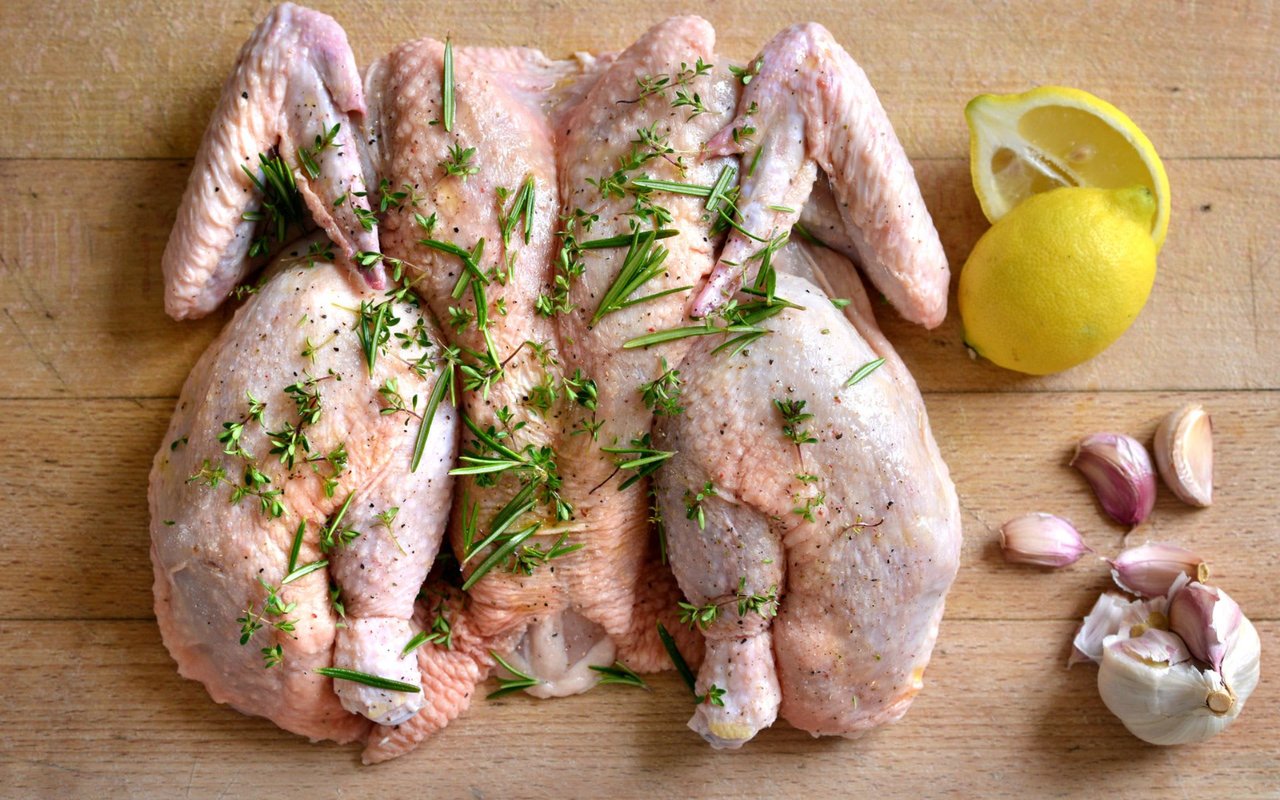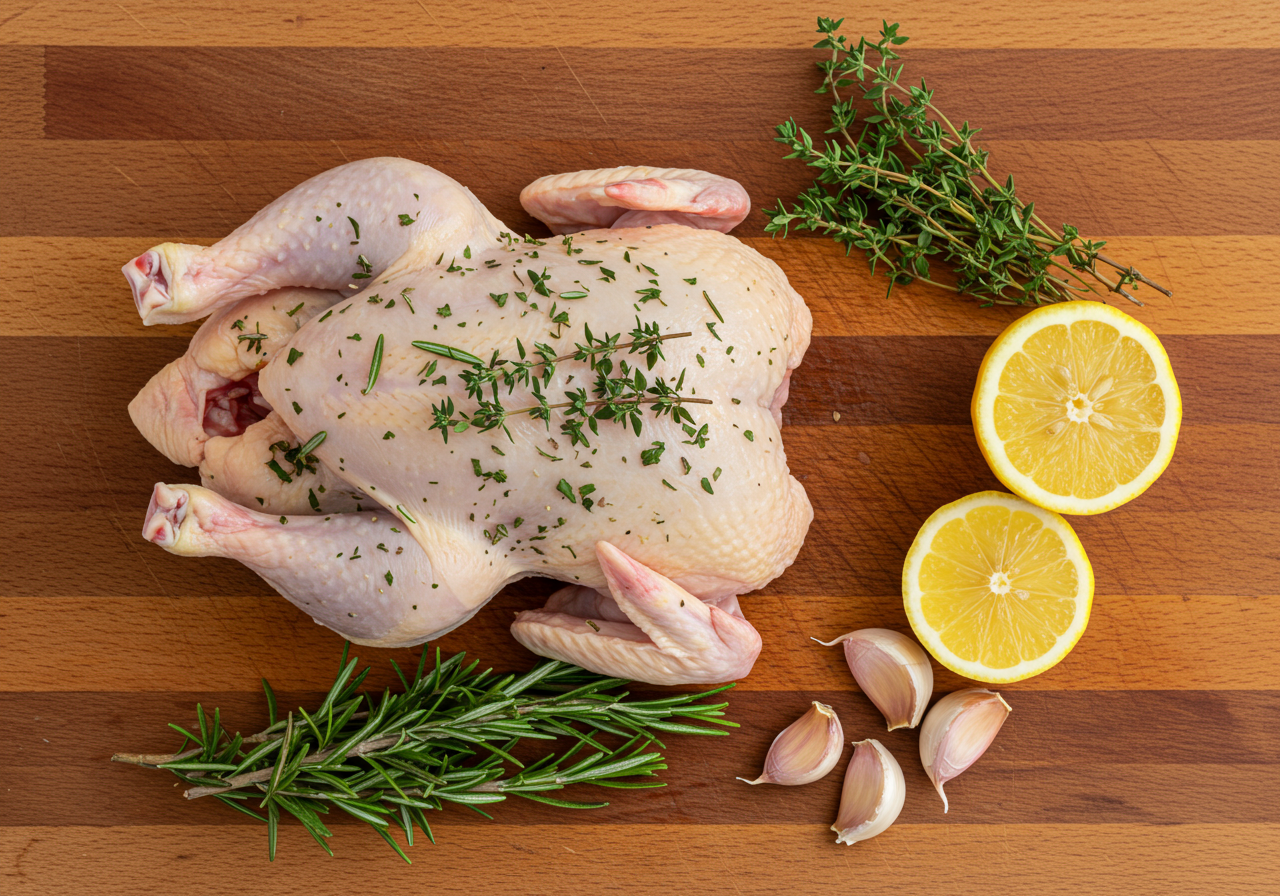
These days thanks to the modern convenience of our supermarkets preparing chickens, hens, and turkeys for cooking can be as easy as opening a package. Two qualities that we really strive for when cooking poultry are moist, tender meat with a golden brown, crispy skin, both of which can be achieved through spatchcocking¹ and brining.
So before we get into this… Make sure you have a beautiful, thawed-out, preferably organic turkey (if you’re a butterball lover, that’s your business) and 2 whole days to spare before Tommy’s big day!
1. Spatchcock
I know the minute you saw the word “Spatchcock” some of you thought I made it up but here is what Wikipedia has to say about it. (“Spatchcock” is also the traditional word for the French term “poussin”, a juvenile chicken. Poussin or Spatchcock was generally butterflied in preparation for faster cooking, hence in modern English the word has come to refer to both the bird and the manner in which it was traditionally prepared). To achieve this you remove the backbone and breastbone of the bird and flatten it out before cooking; which allows it to cook more quickly and evenly, resulting in extra crispy skin. If bringing you should spatchcock the bird first, as it will expose more of the meat, make rinsing the brine quicker, not to mention it will be much easier to accommodate a flat turkey in a container or brining bag than the whole Tom. Plus if you will be making stock using the backbone, it’s better un-brined.
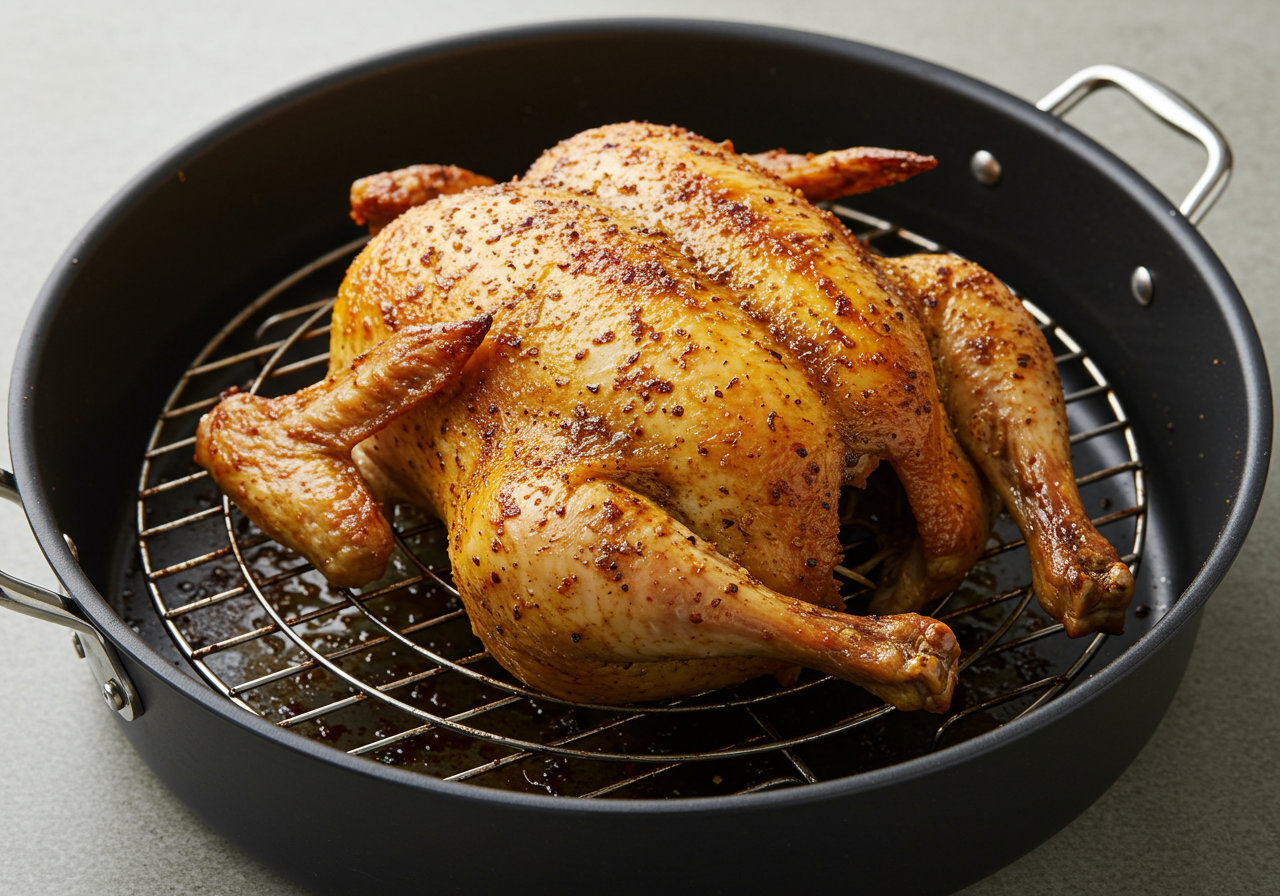
How to Spatchcock/Butterfly a Bird
Simply remove the bird from the package, draining any liquid in the process, and pat dry with a paper towel. You will need a large cutting board reserved for meat and poultry, a sharp knife or kitchen shears, a small pairing knife and I personally like to wear surgical gloves, yes I wanted to be a doctor but I also just love clean hands. If you wish you may lay paper towels under the cutting board to prevent the board from slipping.

First things first, reach inside and remove the baggy containing gizzards and the heart, and reserve for stock. This bag may or may not be present in chickens and hens. The gizzards may be loose or previously removed.
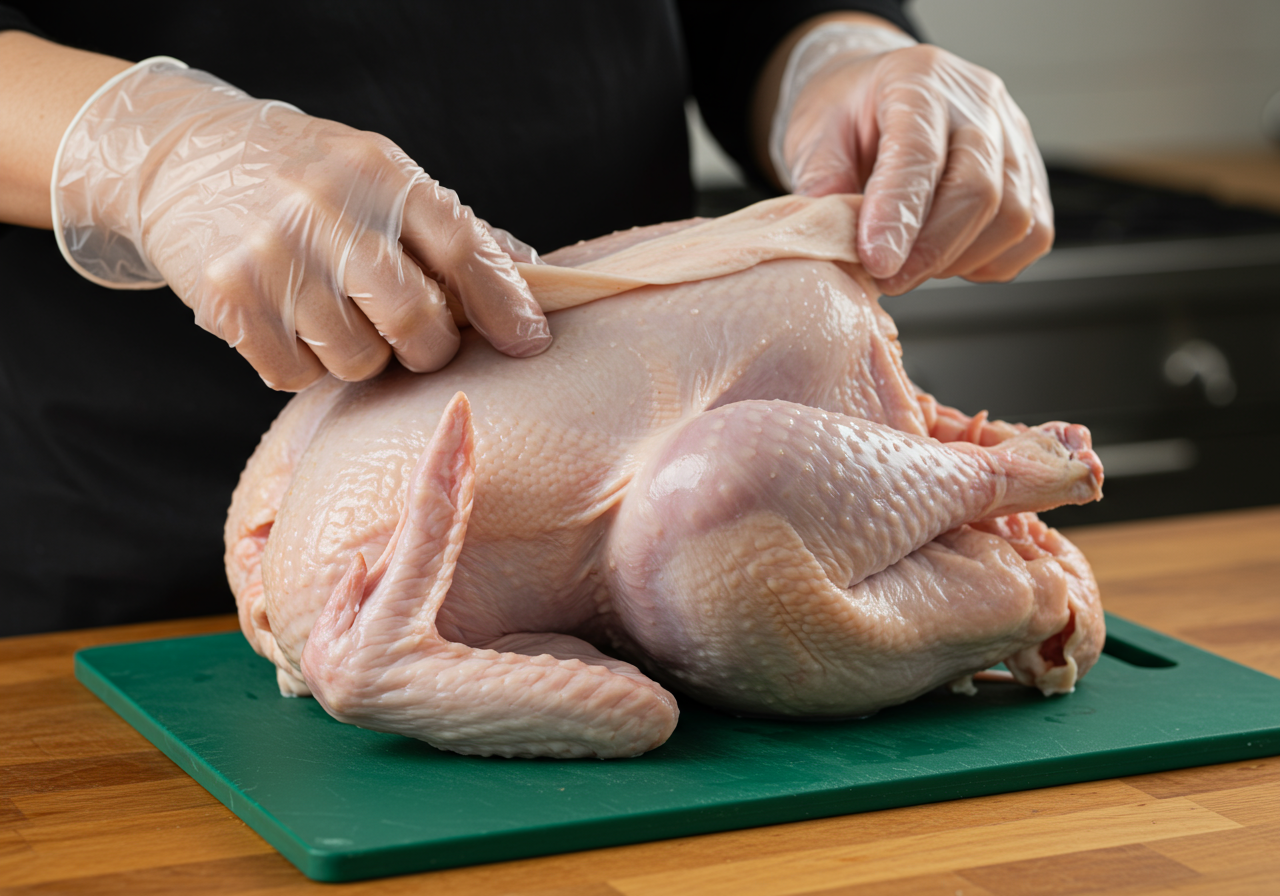
Stick your hand back into the cavity and remove the neck, reserve for stock.

Place the bird breast-side down on the board with the cavity towards you.

Using your knife or kitchen shears, first cut along one side of the backbone until cut all the way through.
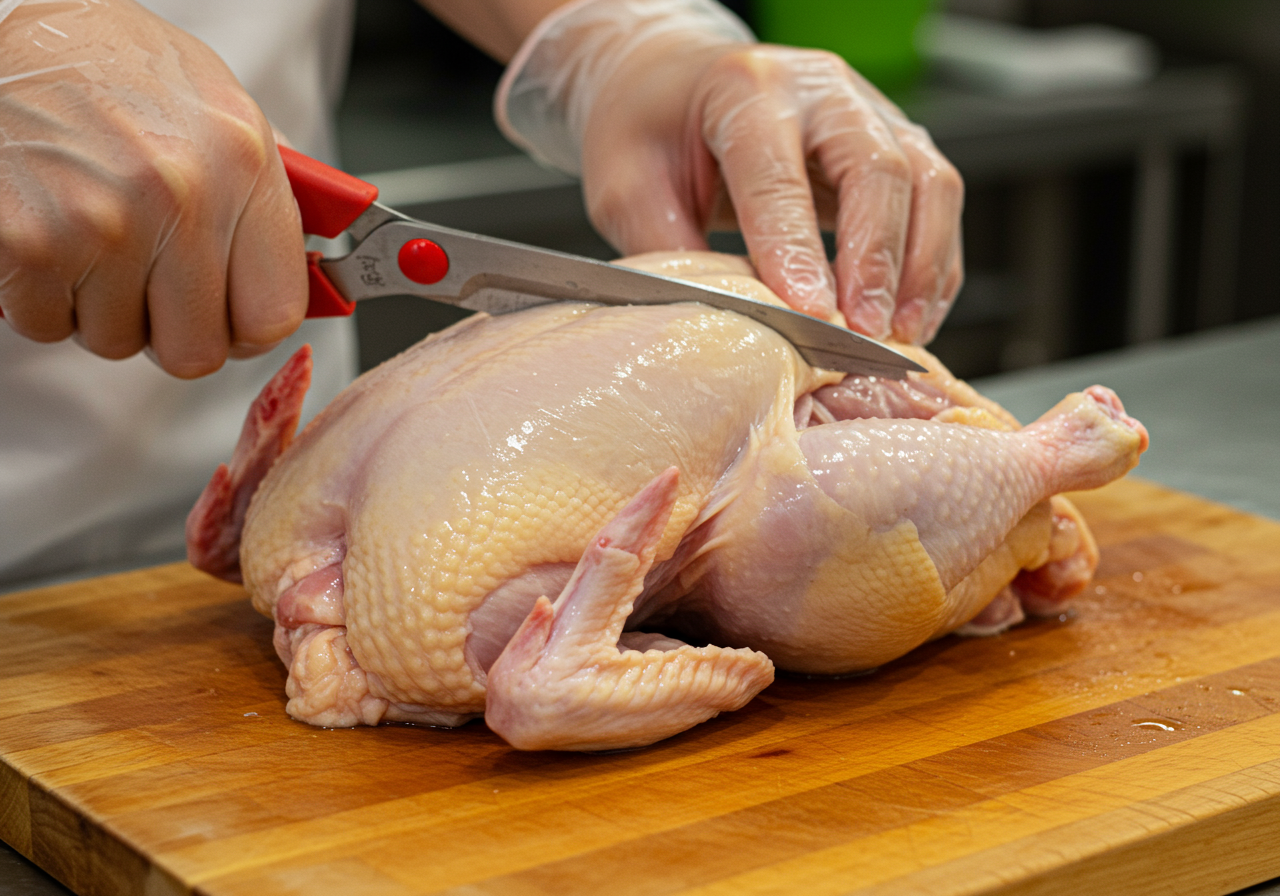
Rotate the bird and repeat the cut along the opposite side of the backbone.
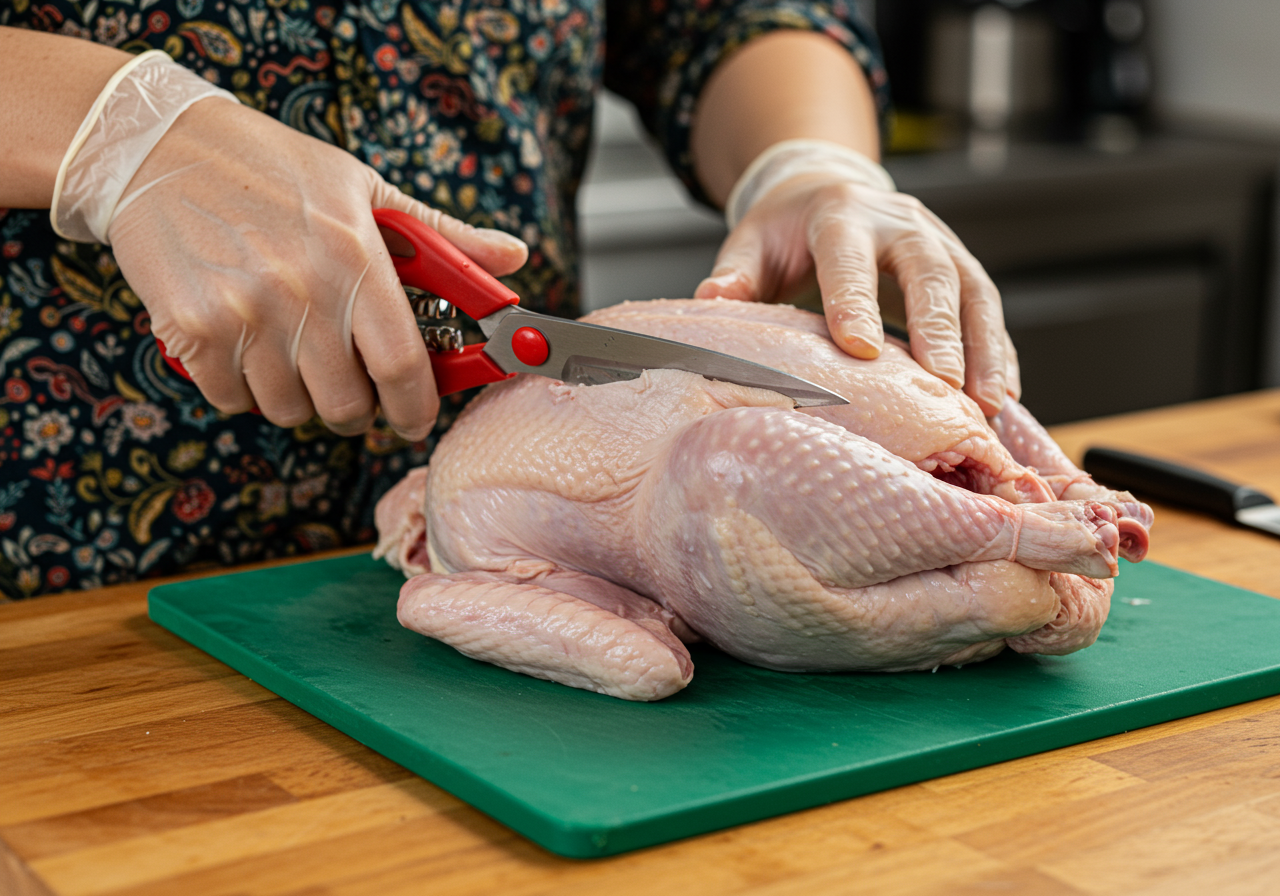
Remove the backbone and reserve for stock.
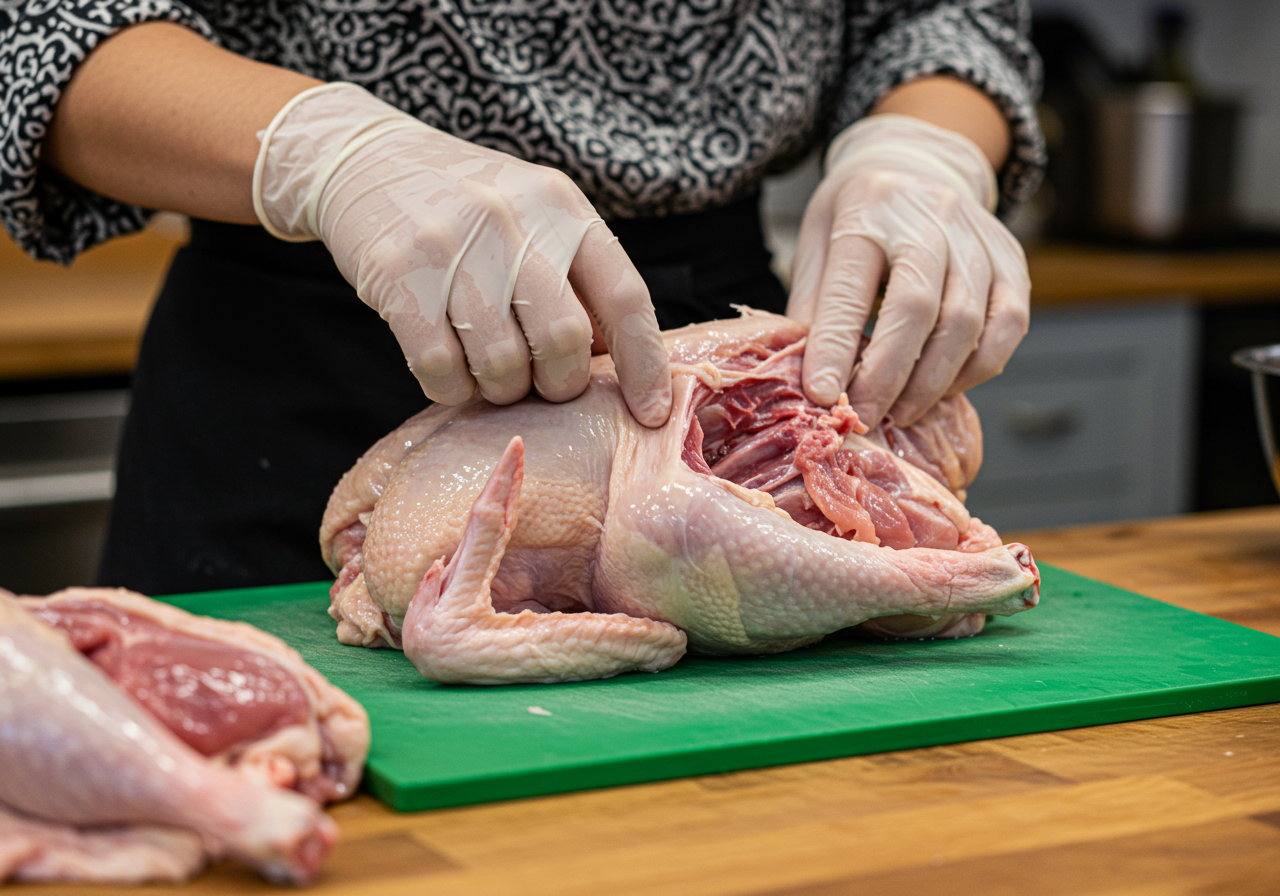
If the butt was not attached to the backbone you may still find it inside, if so remove it and reserve it for stock.
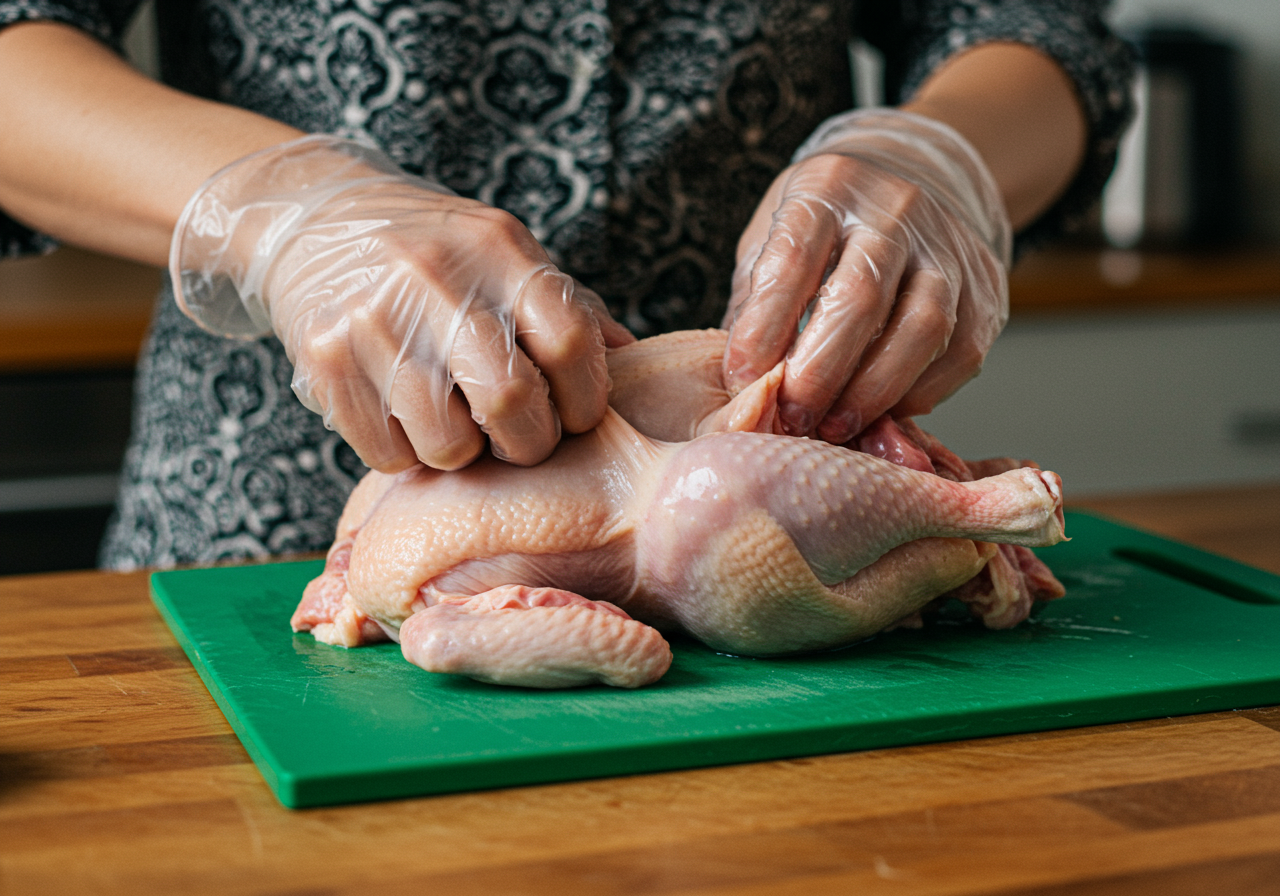
Open the chicken up like a book to locate the diamond-shaped breast bone also known as the keel bone. With a pairing knife, cut along both sides of the breast bone.
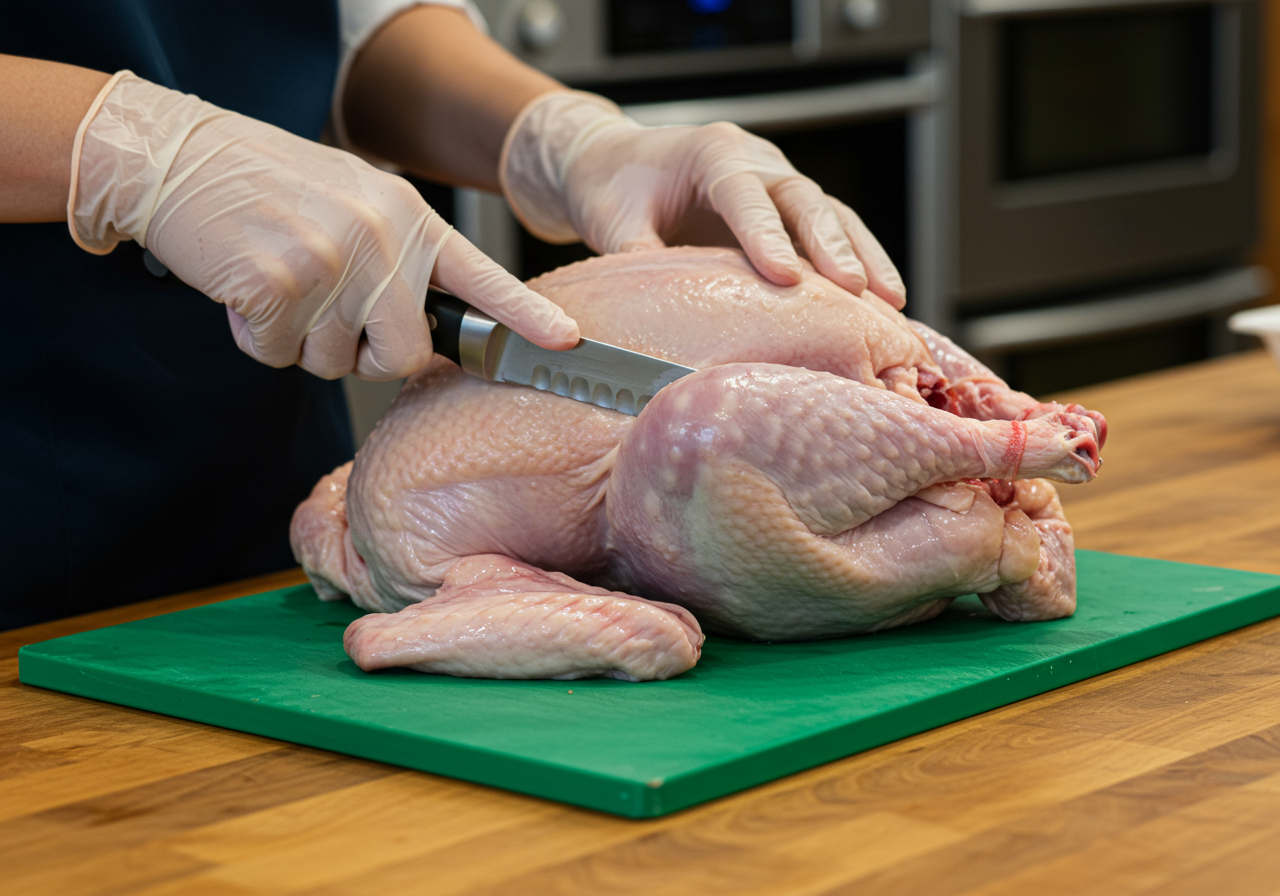
Run your fingers along either side, then just pull it out. You might need the kitchen shears or a pairing knife to carve it away from the breast meat. Again this is very easy on a game hen as it’s mostly cartilage and requires a bit more effort with larger poultry or game.
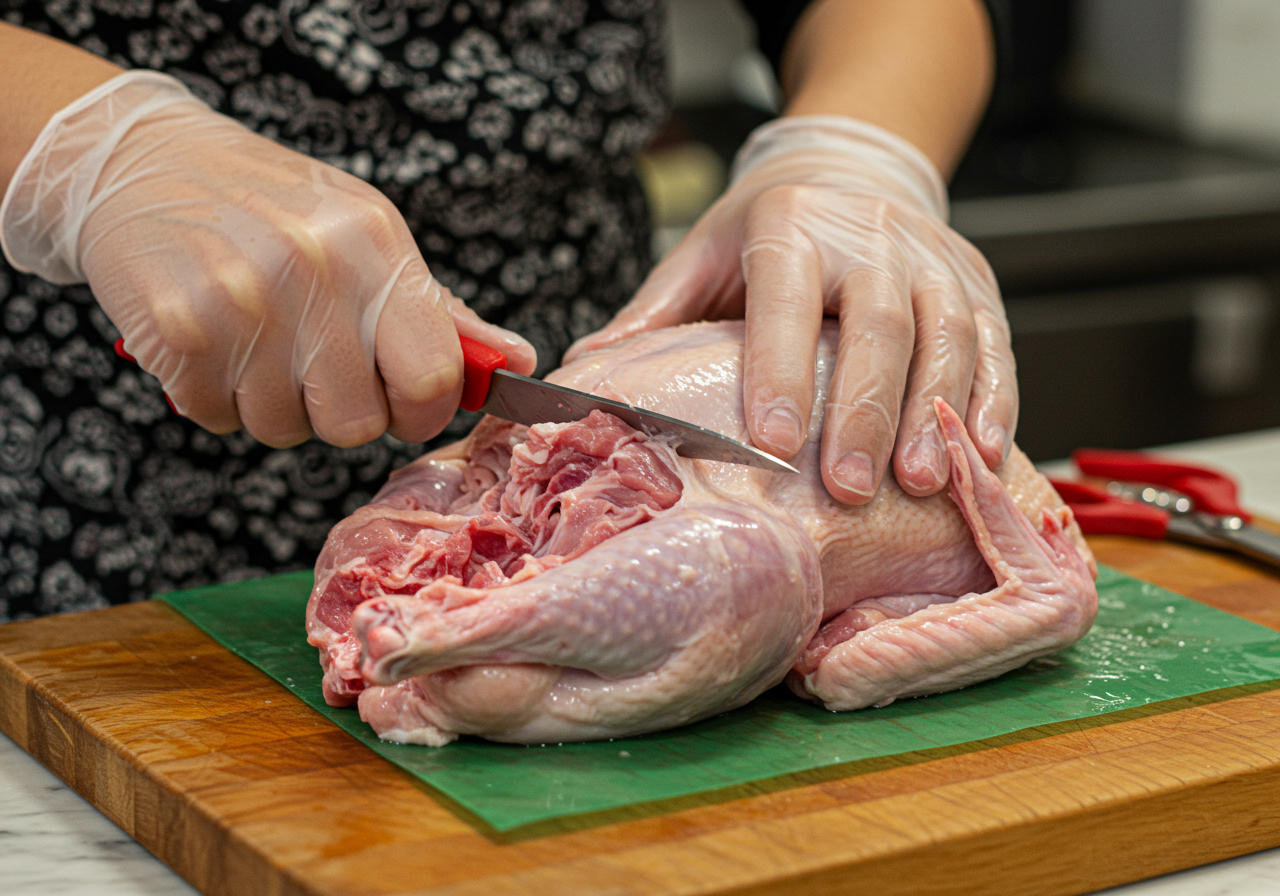
Cut away any excess fat on either side of the bird, and it’s ready to brine or cook.
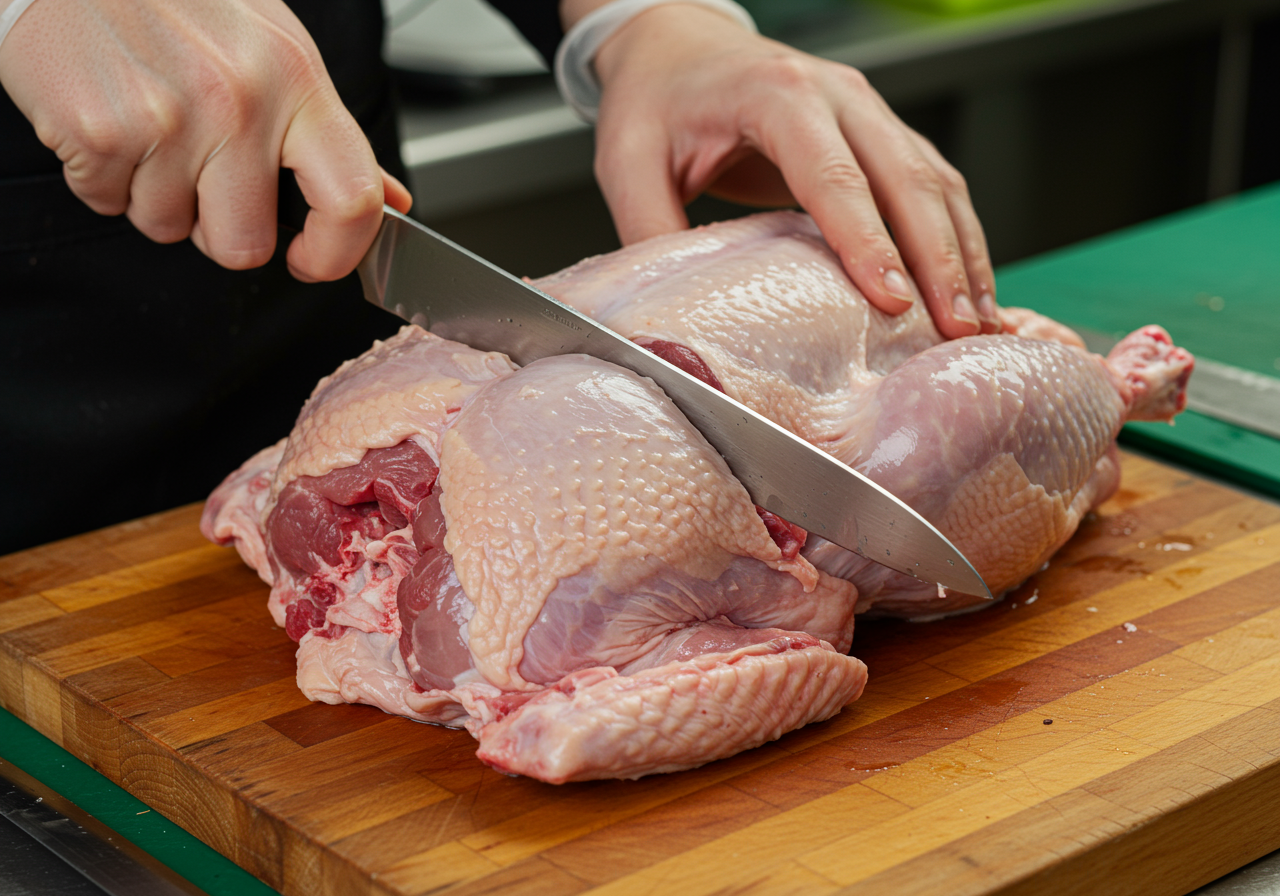
Now let’s turn our handy work over, you have to admit our turkey looks pretty great. We just increased the surface area guaranteeing crispy skin for everybody. Now let’s talk about bringing.
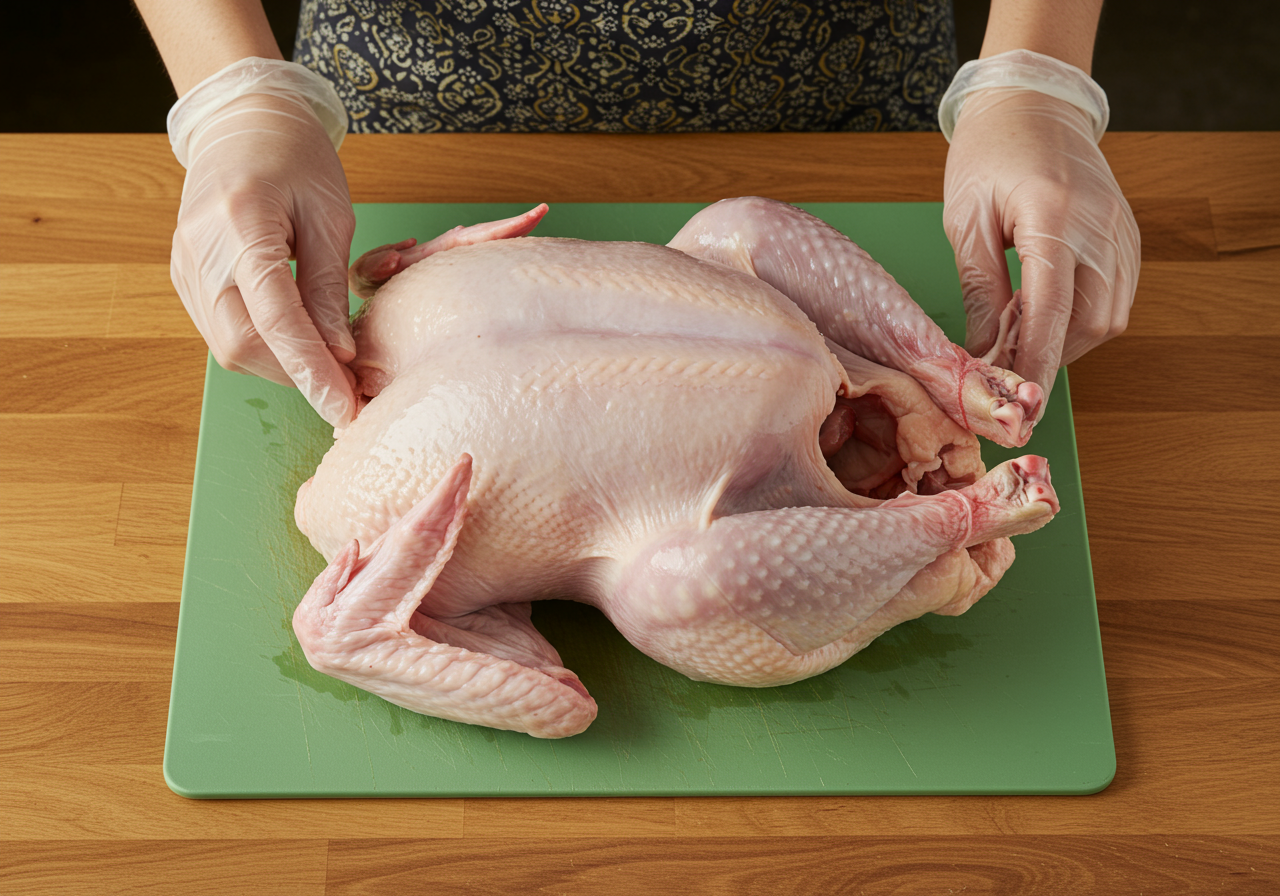
2. Brining
A process similar to marination in which meat is soaked for several hours to several days prior to cooking in a salt/sugar/spice mixture. This process results in moister-cooked meat by hydrating the cells of its muscle tissue before cooking. There are many readily available brines or you can make your own. We used and loved Spiced Apple Brine by Tyler Florence.
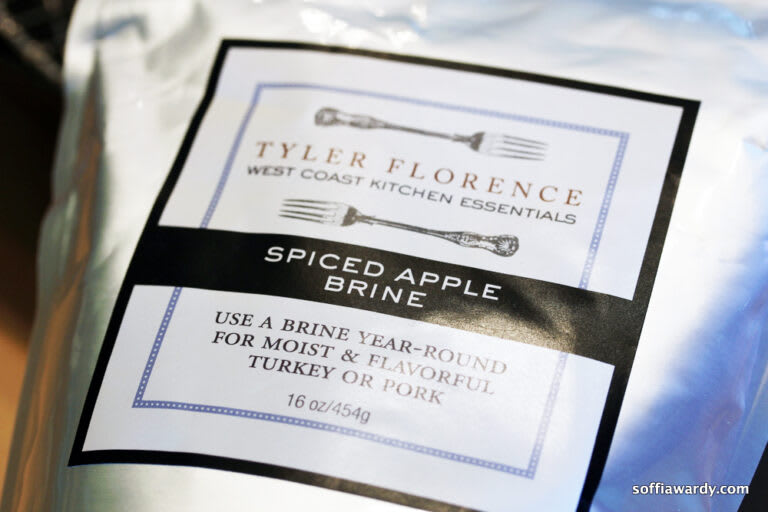
Place the turkey in an oversized ziplock or brining bag. Follow the directions on the brine package and pour the brine into the ziplock and seal.

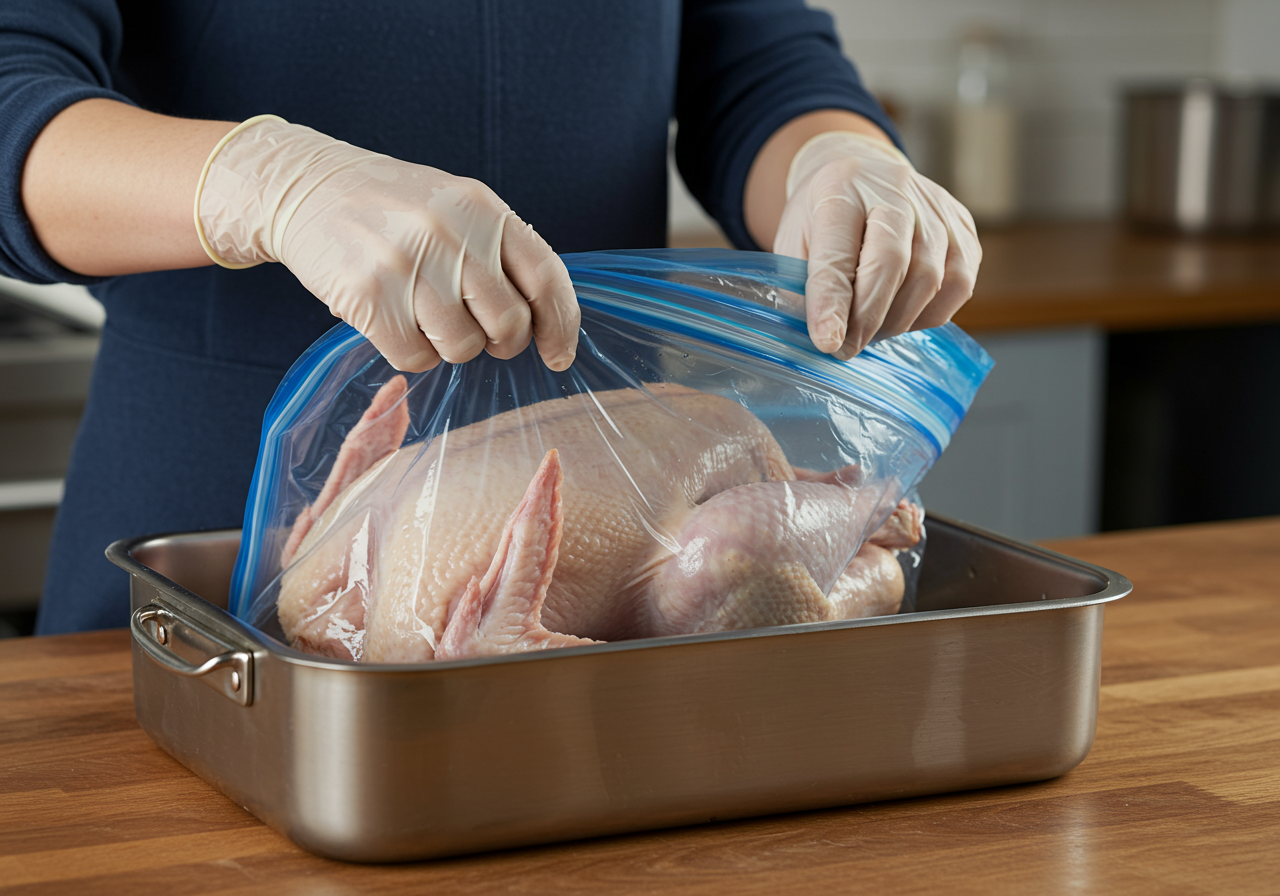
Make sure to place the bag in a pan or other vessel to contain spills or leaks. Also, make sure to turn the bag over at least halfway through the brining process to make sure the entire poultry gets coated. Brining can usually be accomplished in 8-24 hours, after this period discard the brine and thoroughly rinse the bird on both sides. Pat dry and place on a rack over a cookie sheet or pan to continue to dry, uncovered in the refrigerator overnight. Placing it on a rack will allow any residual juices to drain. After this process, the bird will have a translucent appearance. Drying the bird will give you that crispy skin.

Well, that about sums it up, if you want to see how we cooked our turkey check out our post “Apple-Sage Flat Iron Grilled Turkey”. Oh and let’s not forget that amazing homemade stock that we made with the reserved backbone, neck, and gizzards. We used it as a base for our Applewood Smoked Bacon-Sage Gravy.
Also, see other recipes using Spatchcock poultry.

